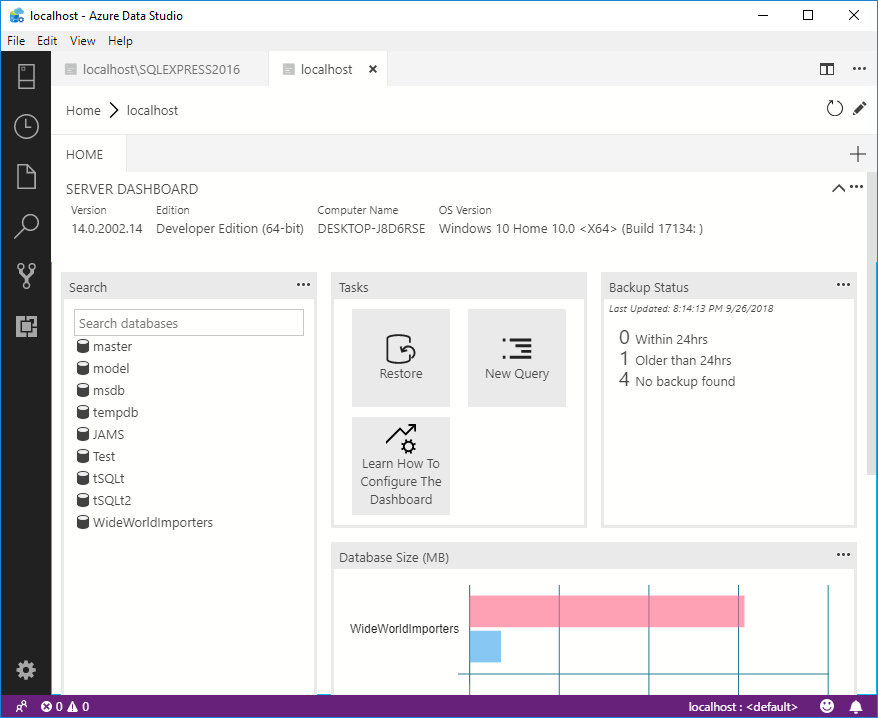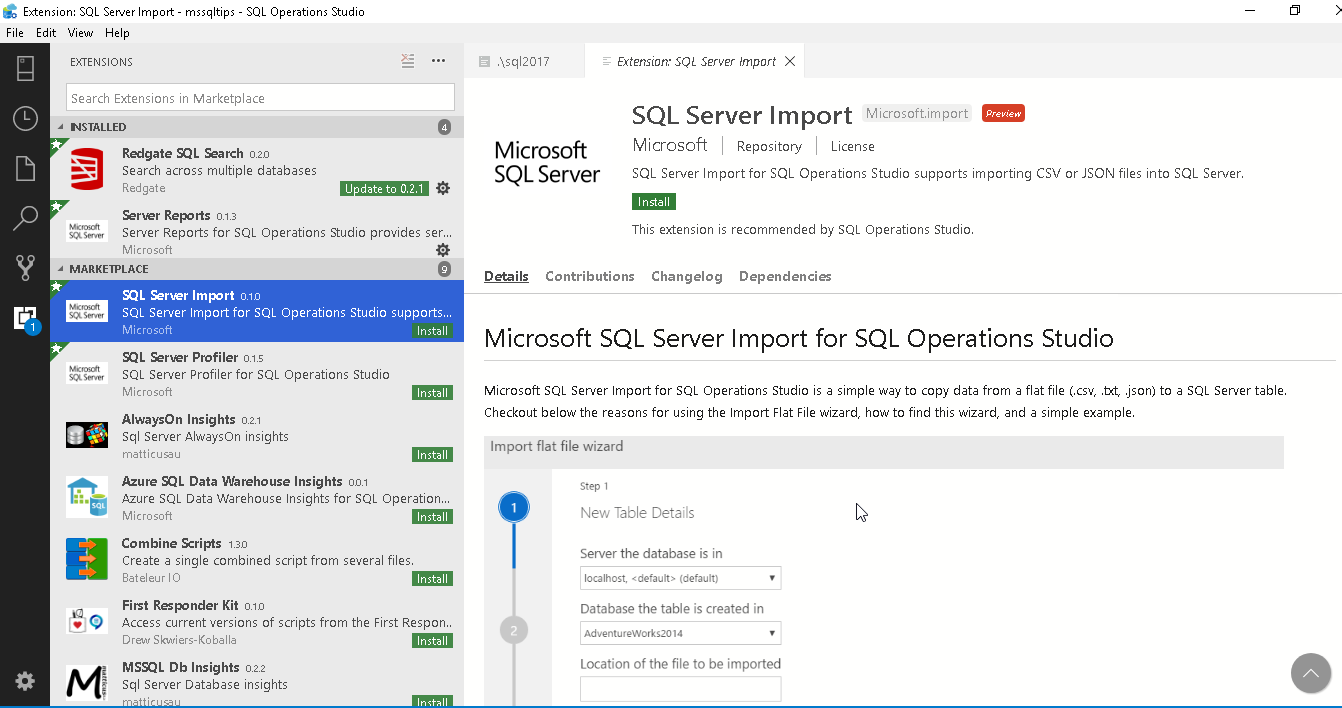
Since we had to drop this data into a new table, we could easily do some work to get this data where you really wanted it. You can start querying your new table just like you would anything else in Azure Data Studio. The extension isn’t really fully functional here, but I’m hoping it improves. Why did it fail? Who knows! Maybe your table already exists, maybe you have a data type conflict somewhere. Once you’re satisfied, click import data! If everything worked, you’ll get a happy checkmark. So take your time and know what you’re picking. For instance, in my source data I had the word “Yes” in a column and this wizard wants to translate this to a bit field. On top of that, the wizard sometimes doesn’t make the best decisions about your data types, either. Granted, our file is small and we don’t have a lot of fields, but imagine how this would look if you had more. This is by far the hardest part of this process. With that done, you now move on to the tedium: specifying your import schema. If you did it right, you’ll get a preview of your data file on the next step. I have no clue as to why, but that’s just how it works (for now?): One thing to note: you *have* to import your data into a new table.

Most of this is pretty self-explanatory, but here we go. After we click this option, we’re going to get a wizard to walk us through the import.

If your extension installed successfully, you should now have a new context menu when you right-click on your database name in Azure Data Studio: I’d recommend sticking with the Microsoft-supplied one, but hey, there might be something better, and if you found one, tell me!) Your search might be a little trickier, or, the name of this extension might change. (Side note: as of the time of this writing, there aren’t many extensions in the marketplace for Azure Data Studio, but it’s growing rapidly. We’ll go ahead and click on the “extensions” tab on the left hand side, and we’ll just search the marketplace for “import.” Here’s what I’m seeing: Maybe it even looks like this:įirst things first, we’re going to go and grab the latest “SQL Server Import’ extension from the extension marketplace. So let’s say we’ve got ourselves a good ol’ comma separated file. Let’s give it a whirl to see how it all works. Likewise, there’s also an extension for importing flat files in your databases, too. For instance, did you know you can now connect and work with PostgreSQL databases in Azure Data Studio? Just like Visual Studio Code, you can add extensions to add new functionality and features to your installed editor. If you open that up, there’s a decent amount (and growing almost every day) of extensions you can add to your client. Over on the left-hand side of the UI, there’s an icon that lists extensions. If you’ve only downloaded the binary for Azure Data Studio, loaded it up, connected to a server and ran a query, you may have missed out on one of the best things it offers: extensions. It turns out that you can, but you just need to think fourth-dimensionally, Marty. One thing I’ve overhead is that if you want to load data to a database, you’re still locked into using a tool like SSMS to import or export data. But that doesn’t stop people from pooh-poohing it, complaining about things it can’t do compared to what they’re familiar with. Without starting an argument, I don’t think of it as a replacement I view it as a side-by-side tool with a stronger focus on development than something like SSMS where I can do more administrative work.

Still, I get feedback from people all the time that they don’t think it’s a good replacement for SQL Server Management Studio (SSMS).

I love it, and I’m happy to see people using it either where I work or out in the wild. By now, you’ve probably heard of Azure Data Studio, the lightweight, cross-platform tool for data professionals to connect to, query, and otherwise explore data sources for all sorts of databases, and not just Microsoft SQL Server (see below).


 0 kommentar(er)
0 kommentar(er)
